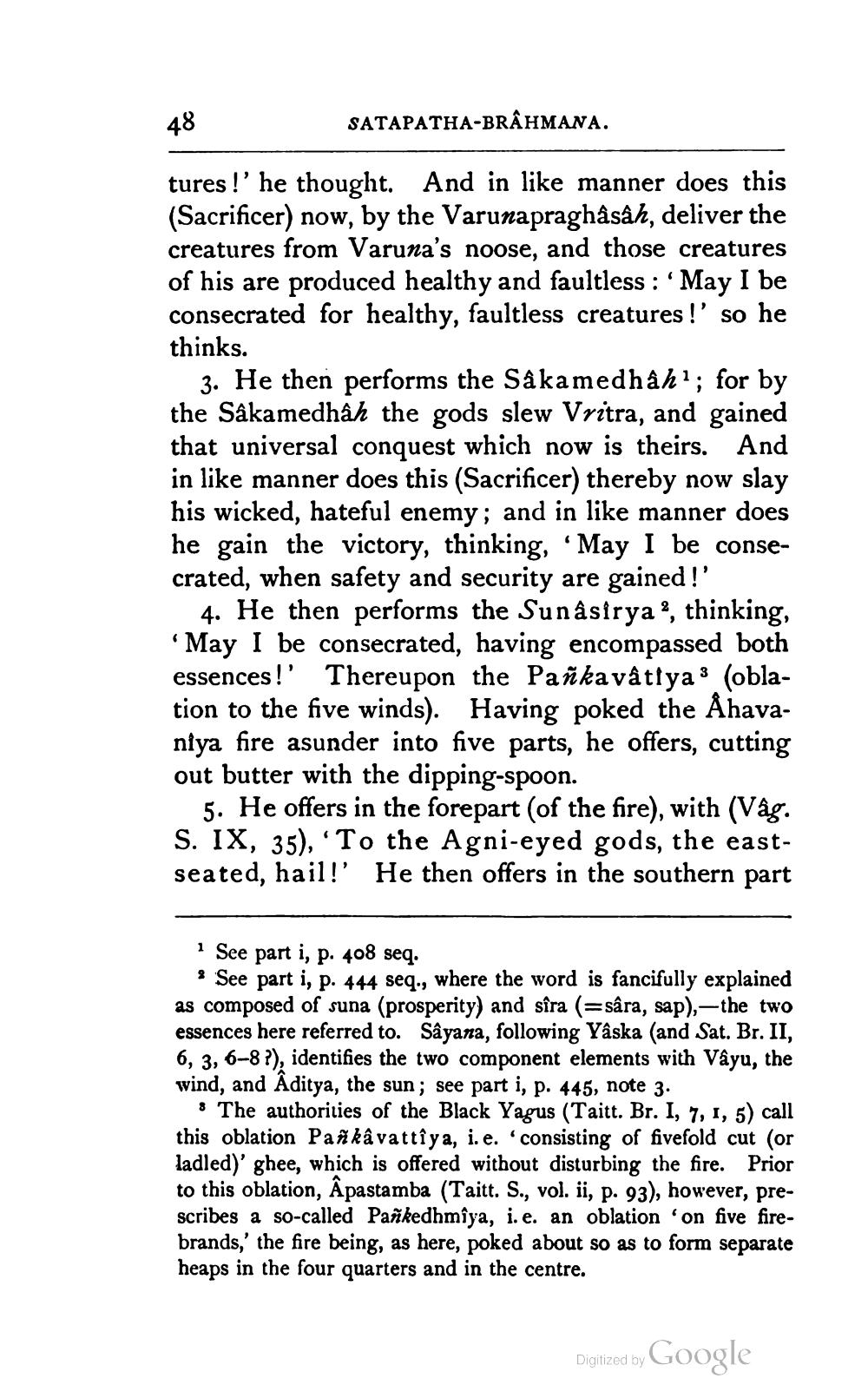________________
SATAPATHA-BRAHMANA.
tures !' he thought. And in like manner does this (Sacrificer) now, by the Varunapraghâsâh, deliver the creatures from Varuna's noose, and those creatures of his are produced healthy and faultless : May I be consecrated for healthy, faultless creatures !' so he thinks.
3. He then performs the Så kamedhâh; for by the Sâkamedhâh the gods slew Vritra, and gained that universal conquest which now is theirs. And in like manner does this (Sacrificer) thereby now slay his wicked, hateful enemy; and in like manner does he gain the victory, thinking, “May I be consecrated, when safety and security are gained !'
4. He then performs the Sunâsirya, thinking, “May I be consecrated, having encompassed both essences!' Thereupon the Pañka vattya 3 (oblation to the five winds). Having poked the Åhavaniya fire asunder into five parts, he offers, cutting out butter with the dipping-spoon.
5. He offers in the forepart (of the fire), with (Vág. S. IX, 35), ‘To the Agni-eyed gods, the eastseated, hail!' He then offers in the southern part
See part i, p. 408 seq.
See part i, p. 444 seq., where the word is fancifully explained as composed of suna (prosperity) and sîra (=sâra, sap),-the two essences here referred to. Sâyana, following Yâska (and Sat. Br. II, 6, 3, 6–87), identifies the two component elements with Vâyu, the wind, and Aditya, the sun; see part i, p. 445, note 3.
• The authorities of the Black Yagus (Taitt. Br. I, 7, 1, 5) call this oblation Pankâvattîya, i.e. 'consisting of fivefold cut (or ladled)' ghee, which is offered without disturbing the fire. Prior to this oblation, Apastamba (Taitt. S., vol. ii, p. 93), however, prescribes a so-called Pañkedhmîya, i.e. an oblation on five firebrands,' the fire being, as here, poked about so as to form separate heaps in the four quarters and in the centre.
Digitized by Google




